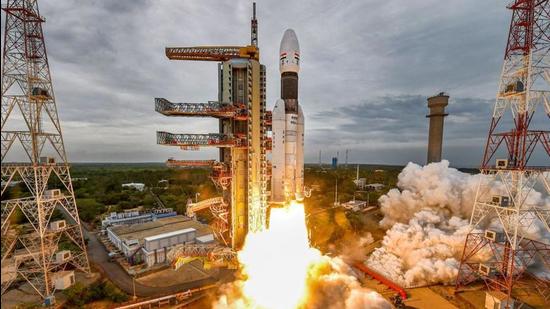Chandrayaan-2 has completed 9,000 orbits: Isro
The space agency is also conducting a two-day workshop to disseminate information about the publicly available data and the research already conducted.
The Chandrayaan-2 has completed 9,000 revolutions around the moon, Indian Space Research Organisation (ISRO) chairperson Dr K Sivan said on Monday, after releasing data gathered by eight payloads aboard the orbiter on the eve of the second anniversary of India’s attempt to soft-land near the lunar pole on September 7, 2019.

The space agency is also conducting a two-day workshop to disseminate information about the publicly available data and the research already conducted.
This is a milestone as India’s previous lunar mission had stopped communicating after ten months in lunar orbit. In contrast, the Chandrayaan-2 orbiter is expected to function in lunar orbit for seven years, collecting scientific data. “The payloads will provide repetitive data from multiple points due to the many years of operation,” said Dr AS Kiran Kumar, former chairperson of ISRO and chair of the apex science committee at the space agency.
The orbiter will also function as the communication link between the lander-rover Chandrayaan-3 mission, which India plans to launch in 2022.
Talking about the science from the eight surviving payloads, Dr Sivan said, “The results are very much encouraging.” He further urged the academia, students and everyone interested to utilise the publicly available data to generate new science. “The data is national property use it to discover new science,” he said.
He said the moon was crucial to understanding the origin and evolution of the solar system. “Being airless, there is no chemical weathering of the evidence, especially at the shadowed areas at the poles,” he said. Moon could also become a base for further inter-planetary travel, with the water becoming fuel for such mission, he added.
Two of the payloads onboard the orbiter – Dual Frequency Synthetic Aperture Radar and the Imaging Infra-Red Spectrometer – have been able to distinguish between the water and hydroxyl (OH) molecules on the moon that were first detected by its predecessor.
OH molecules were more likely to be found in the space-weathered lunar plains with high surface temperatures whereas more water molecules were observed in fresh surfaces.
The Chandrayaan-2 Large Area Soft X-ray Spectrometer (CLASS) can map elemental abundance at a high spatial resolution, much better than the instruments available so far. The Solar X-ray Monitor (XSM) studied for the first time quiet sun microflares; almost all solar flares are observed in the solar active regions. The observations provide strong support to the hypothesis of the occurrence of small-scale impulsive heating events everywhere on the solar disk, which could contribute to the heating of the corona.
On that day, just 2.1 km from its destination, the Vikram lander crashed into the lunar orbit. The Vikram lander and Pragyan rover together had five payloads, with its most important task being the observation of water molecules in the permanently shaded region near the lunar South Pole where it was to land.






